
It's funny how there often seems to be a space for a little honeybee or two on my cookies, and on occasion I've made a honeycomb for them to sit on. In this two-part tutorial, I'm going to show you how to create a honeycomb cookie with a bee sitting on it. First, I shall demonstrate how to create the 3-D honeycomb effect using a wet-on-wet technique; then in Part 2, how to pipe the bees, by eye, any size you like.
What you will need:
- Blank cookies of whatever shape and size you like, with a surface area suitable for covering with a honeycomb effect
- Royal icing in a thickish flood consistency, approximately 15- to 20-second consistency in three colours (see below for notes about colours and consistency)
- Scribe tool or toothpick
- Bags and tips for outlining and flooding, and no. 1 tips for piping the pattern
- Optional: Lustre dusts in a couple of colours (see below for note about colours)
- Optional: Large soft food-use-only brush for applying the lustre dust
Colours:
It doesn't actually matter what colours you choose for the honeycomb effect; what is important is the relative depth of tone, so that as you pipe the pattern, they work together to create the light and shade of a 3-D effect. I've done this pattern in blues before (!), but for this tutorial I've chosen to stick to actual honey colours.
It's easiest to choose white as your lightest colour, as it is only going to be used as a highlight. You won't need much of it at all. Your second colour should be mixed in two depths. First: a small amount of a moderately dark hue (I have a rich honey). Second: enough for flooding your cookies in a mid-tone between the white and the dark. (Here I've used a warm cream.) For the lustre dusts to blend with the piping, I chose bronze and gold.
Consistency:
Thicker flood can be tricky to work with in wet-on-wet applications, as you can end up with an almost "embossed" effect, much like I worked with deliberately in my first tutorial Coffee and Cookies, here. The trouble with using a thinner flood is that the pattern will bleed and blur. The key is to find a consistency that is as thick as you can work with in the time before the icing crusts over.
One trick for dealing with areas of pattern that won't settle is to agitate them with a scribe tool - gently "dotting" them down with a fast motion that temporarily liquefies the icing, allowing it to settle flat. Alternatively, for this honeycomb pattern, try not to worry too much if it's not perfect - these imperfections can add to the overall effect!
So here goes:
1. Using your mid-tone flood colour (here the warm cream), outline your cookie.
2. Immediately flood the cookie using the same colour.
3. Moving quickly and not worrying too much about perfection, pipe a zigzag line across the cookie (it doesn't really matter where) using the darkest colour and a tip no. 1.
4. Add short lines reaching vertically from the points of the zigzags. These do need to be quite short; otherwise the honeycomb can end up looking stretched.
5. Connect the tips of the vertical lines with more zigzags, trying to keep the dimensions even, but don't worry too much if they go askew. (You can see my mine are far from perfect.)
6. Continue the process across the cookie, either covering it entirely, or leaving the pattern slightly broken, as I have here.
7. Now for the dimension: take the white icing, and with a tip no. 1, pipe two adjacent sides inside each hexagon in white. It doesn't matter which sides, as long as they're adjacent and always in the same position in each hexagon.
8. Continue with the white highlighting, until you have made sure that all of your chosen sides of the hexagons are piped in white.
Now you can leave the cookie to dry thoroughly.
My final step for this cookie was to dust it with lustre dusts, shading from bronze to gold. This is entirely optional - the 3-D effect remains more pronounced if you don't do it. On the other hand, a cookie without some lustre dust on it somewhere makes me feel twitchy!
In Part 2, I shall show you a simple method to pipe honeybees freehand (or on a cutout cookie if you want). And there will be more gold lustre dust too! [EDITOR'S NOTE: Everyone, you can expect Part 2 in about a week, so stay tuned!]
Cookie and photo credits: Lucy Samuels


Photo credit: Lucy Samuels
Note: What's New, Honeycat? is a bimonthly Cookie Connection blog feature written by Lucy Samuels, which pushes the cookie envelope every other month with innovative cookie design ideas and tutorials. Its content expresses the views of the author and not necessarily those of this site, its owners, its administrators, or its employees. To catch up on all of Lucy's past posts, click here.



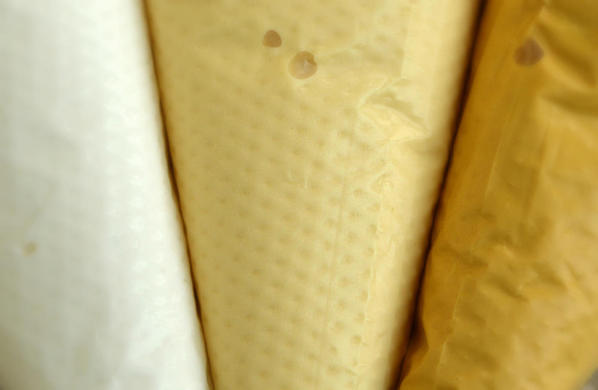


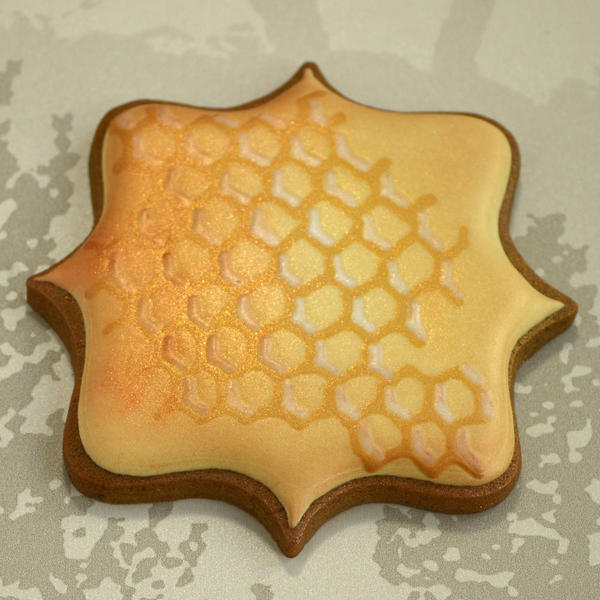

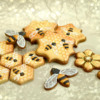


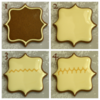


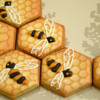
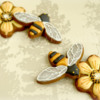
Comments (24)